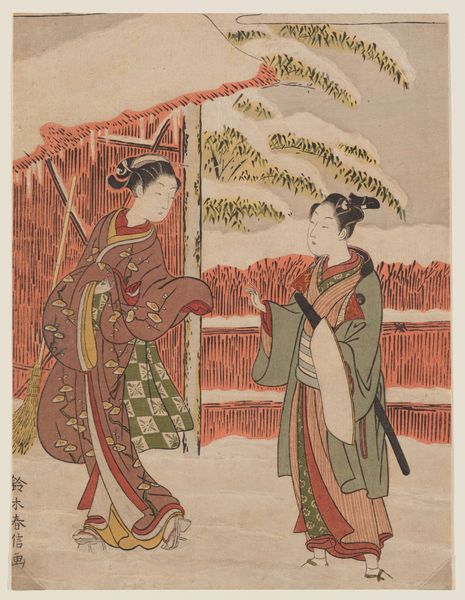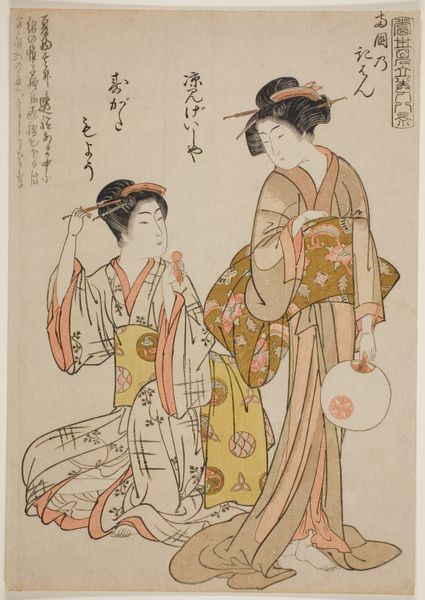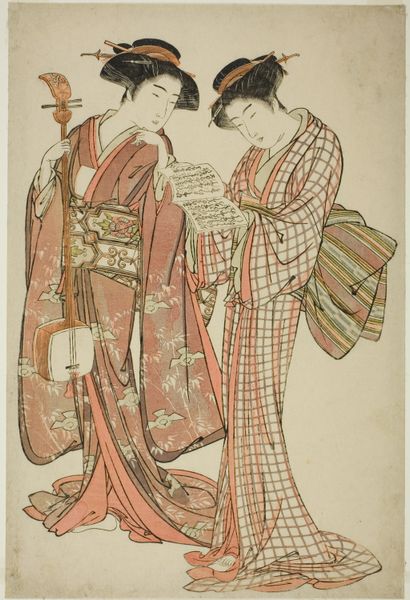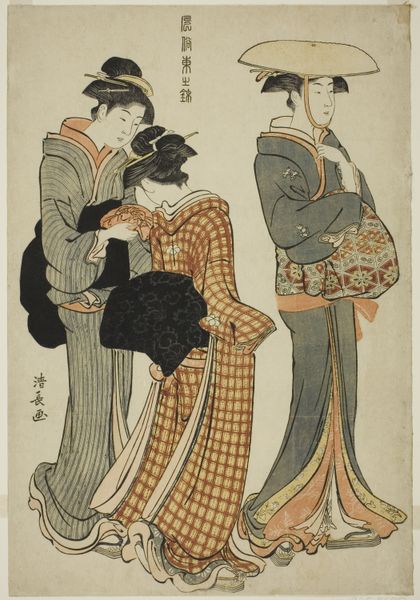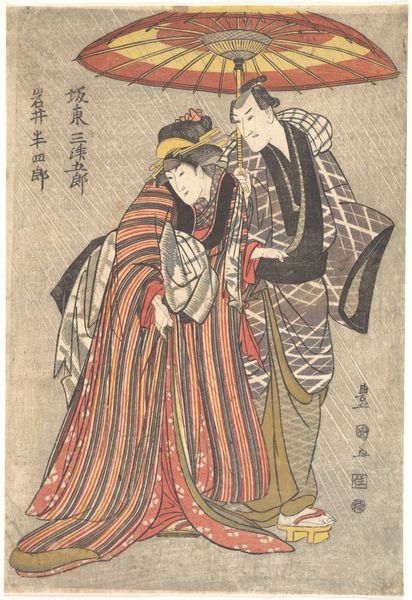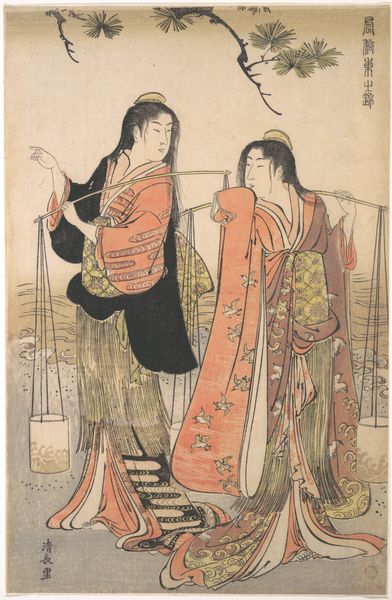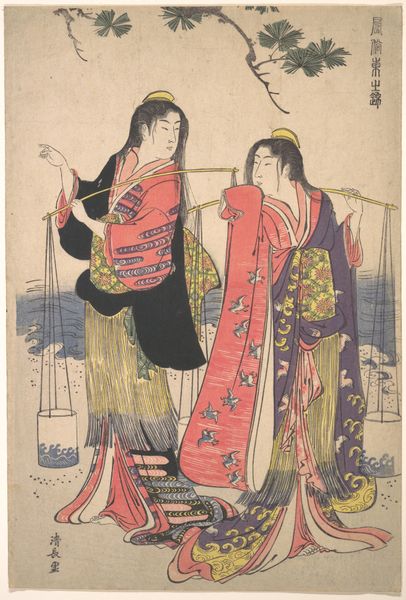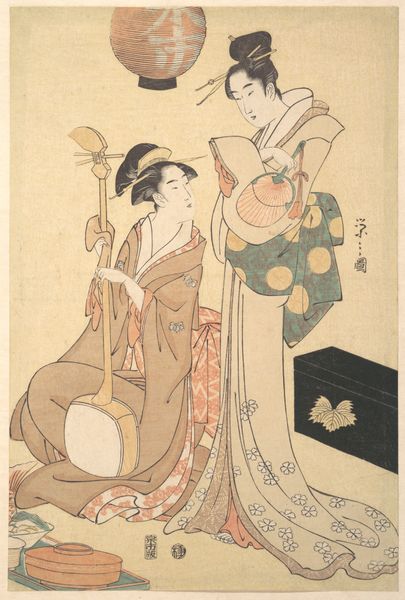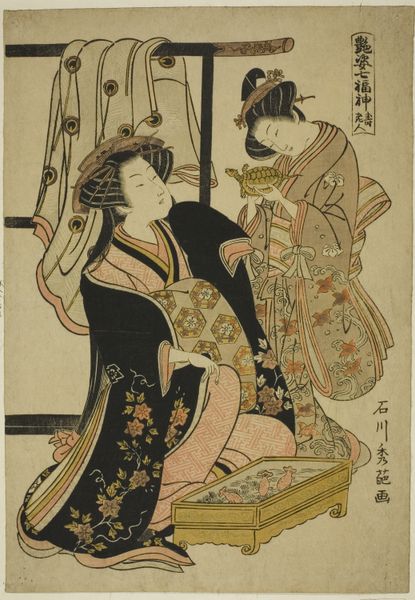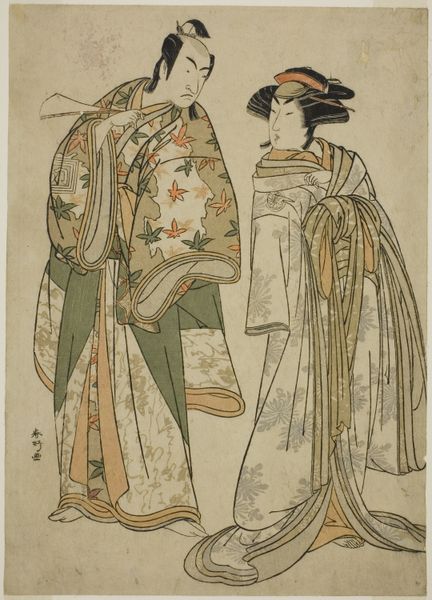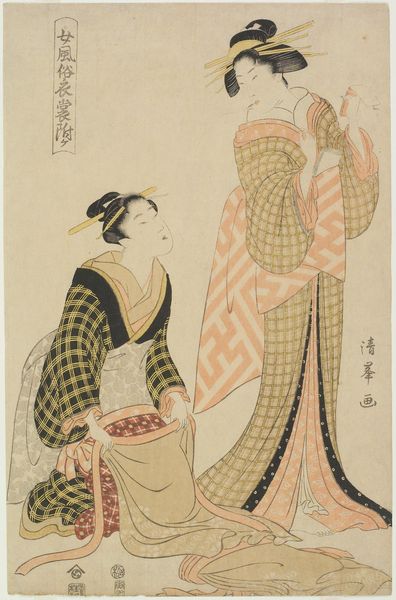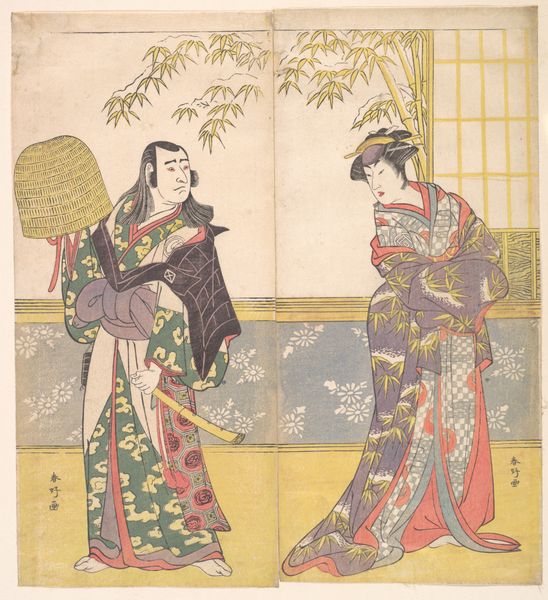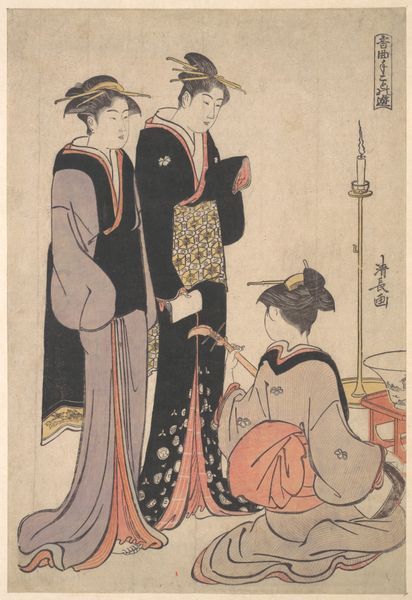
print, textile
# print
#
caricature
#
asian-art
#
caricature
#
textile
#
ukiyo-e
#
figuration
Dimensions: 14 11/16 x 10 in. (37.3 x 25.4 cm)
Copyright: Public Domain
Curator: Standing before us is "Beauties of the East", a print created by Kitao Shigemasa sometime between 1772 and 1792. It's currently held here at the Metropolitan Museum of Art. Editor: I'm struck by the composition, how the two figures seem almost intertwined despite not physically touching. There's an intimacy, a shared space created by their gaze and posture. Curator: Indeed. Shigemasa was a master of Ukiyo-e, capturing scenes of everyday life and popular culture. This work speaks to the idealized beauty of women during the Edo period. It’s a time when the arts flourished under a relatively isolated and stable social order. Editor: But these images also participate in the creation of those very ideals. Who gets represented and how are powerful questions of gender and social control. I wonder about the specific context and role of women being represented as “beauties”. Curator: Well, consider the patronage system. Ukiyo-e prints, while popular, were also commissioned by the elite, reflecting and shaping their values. So, it’s about understanding that power dynamic at play. It is clear how detailed the rendering of their kimono patterns are – really emphasizing the quality and richness of the textiles. Editor: That detail is telling. The patterns, the way the fabrics drape, they hint at the material wealth and status, but also the potential confinement of these women within those roles. This wasn't just passive representation. Were these ideas imposed, resisted, negotiated? Curator: It's fascinating how printmaking played a crucial role in disseminating and standardizing notions of beauty across different social strata. In many ways this accessibility served as a very early form of mass media. Editor: It encourages us to question whose beauty gets centered and whose narratives are excluded. Thinking about it that way shifts my perception from a pleasant aesthetic experience to an interrogation of power and representation. Curator: Right, and thinking about it as a dialogue gives this piece continued meaning even now, centuries later. Editor: Agreed, it calls us to investigate the ways these images perpetuate stereotypes about women and reflect how aesthetics and art history influence cultural ideas.
Comments
No comments
Be the first to comment and join the conversation on the ultimate creative platform.
